Abstract
GR69153, a new parenteral cephalosporin, inhibited 90% of Escherichia coli, Klebsiella oxytoca, Proteus mirabilis, Citrobacter diversus, shigellae, and salmonellae at less than 0.25 micrograms/ml (MIC90). It had activity comparable to those of ceftazidime, cefpirome, cefepime, and E-1040. Against cephalosporinase-producing Enterobacter cloacae, Citrobacter freundii, and Serratia marcescens, MICs ranged from 0.12 to greater than 32 micrograms/ml, and cefpirome and cefepime were the most active agents against these species. Pseudomonas aeruginosa was highly susceptible to GR69153, and for this organism the MIC90 was less than or equal to 2 micrograms/ml, which was similar to the E-1040 MIC90, but most Pseudomonas cepacia and Xanthomonas maltophilia isolates were resistant. GR69153 inhibited Haemophilus influenzae and Moraxella branhamella at less than or equal to 0.5 micrograms/ml. For Staphylococcus aureus GR69153 MICs were similar to those of ceftazidime and E-1040. Enterococci and listeriae were resistant to GR69153, but Streptococcus pyogenes and Streptococcus pneumoniae were inhibited by 0.5 micrograms/ml. The activity of GR69153 was not affected by serum. GR69153 was not inactivated by the beta-lactamases of Staphylococcus aureus, TEM-1, TEM-2, SHV-1, and BRO-1, but it was hydrolyzed by TEM-3, TEM-9, and morganellae. GR69153 had overall activity comparable to those of commercially available parenteral cephalosporins or those found in clinical investigations. It is more active against bacteroides than most available aminothiazolyl parenteral cephalosporins are. GR69153 is hydrolyzed by the new plasmid beta-lactamases, and thus, its primary value may be related to its pharmacological properties.
Full text
PDF
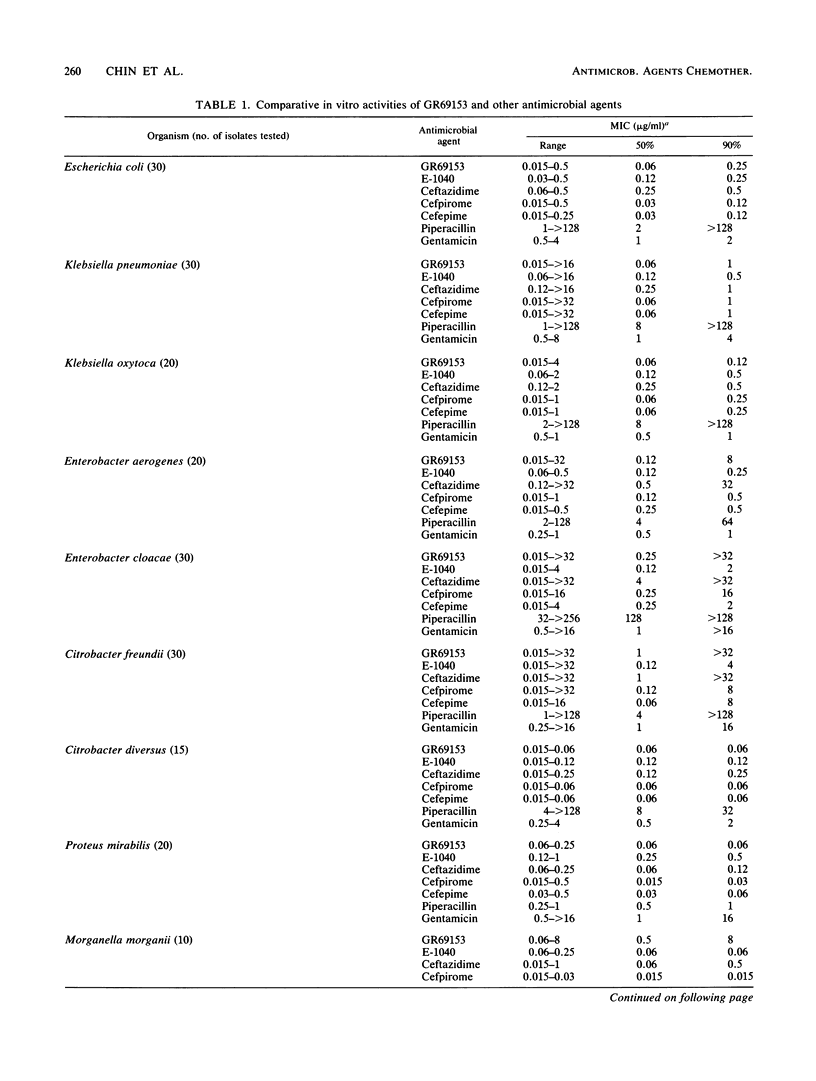
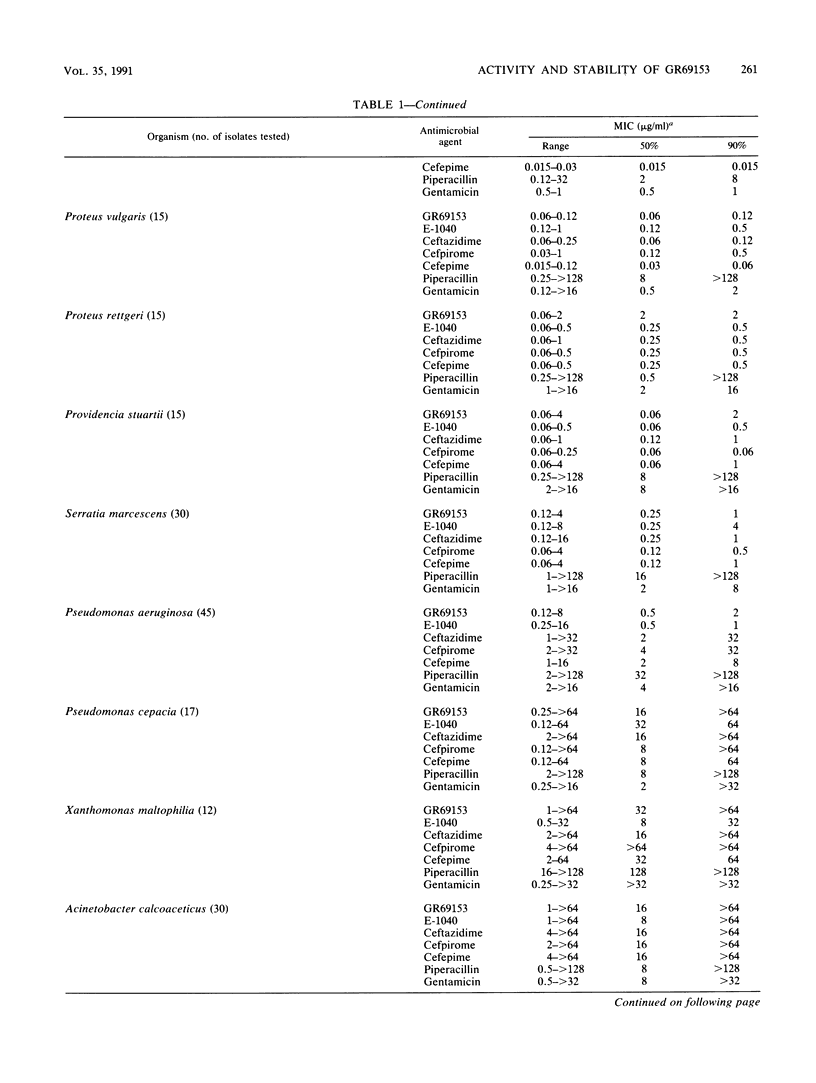
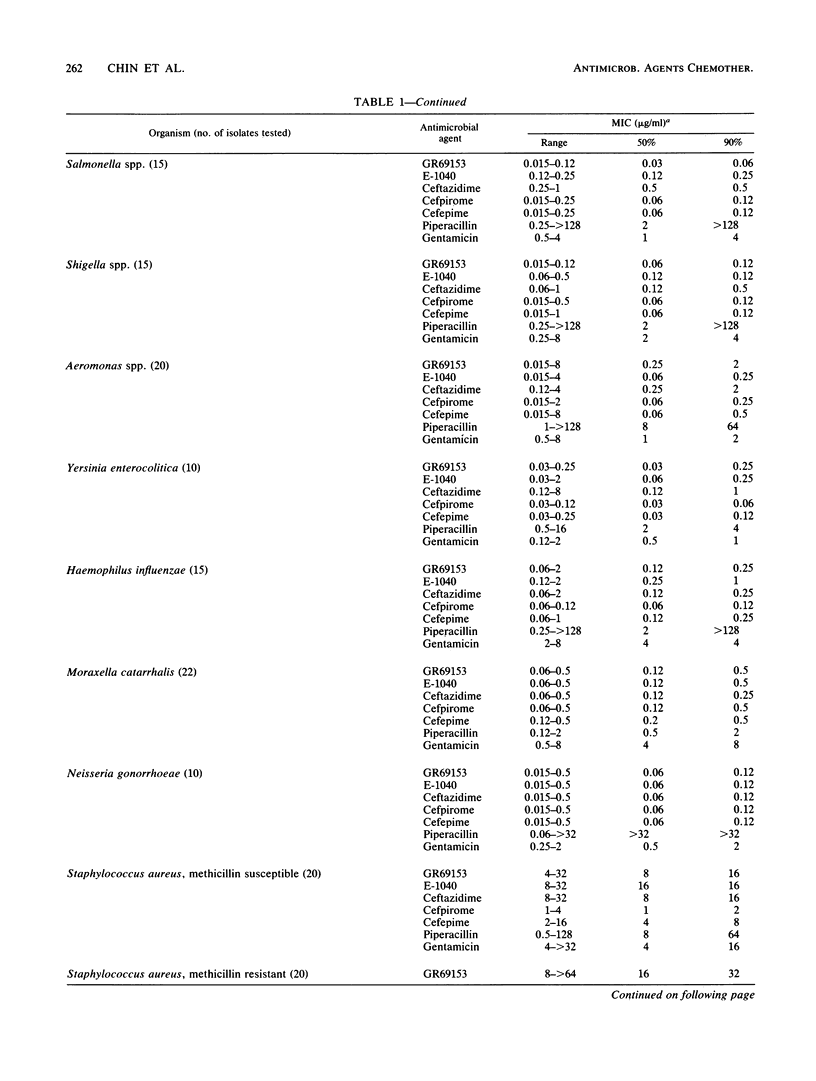
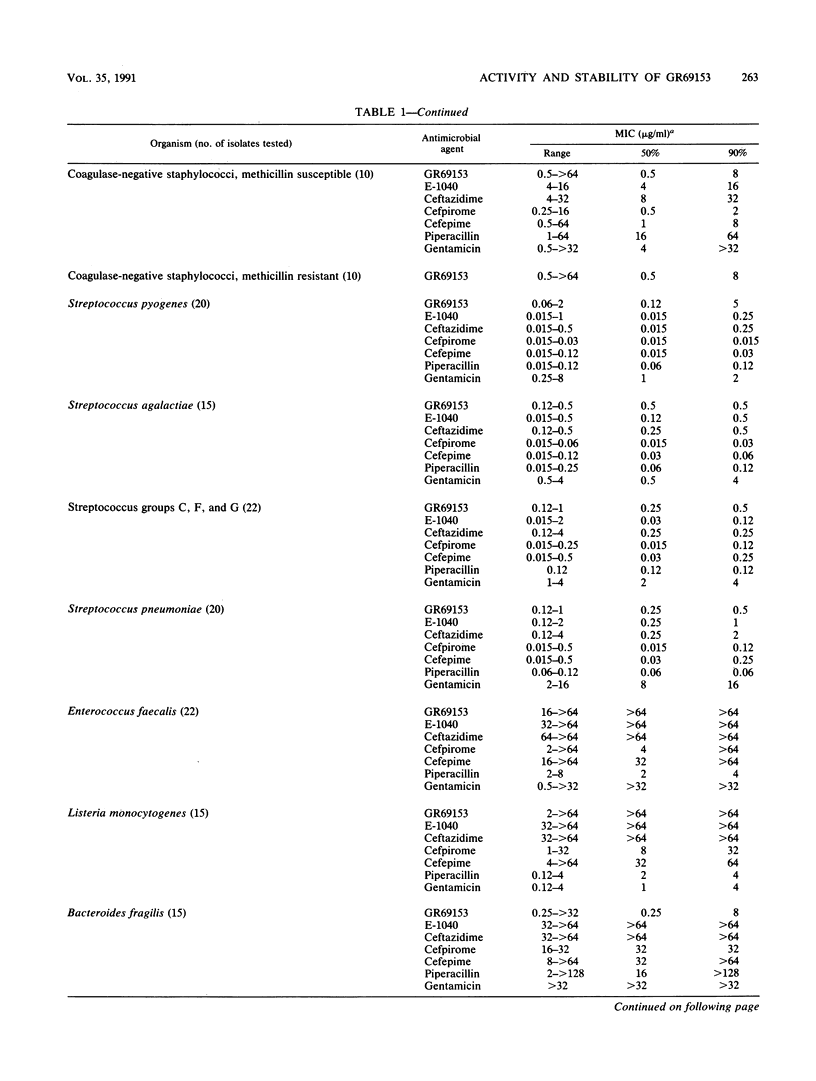
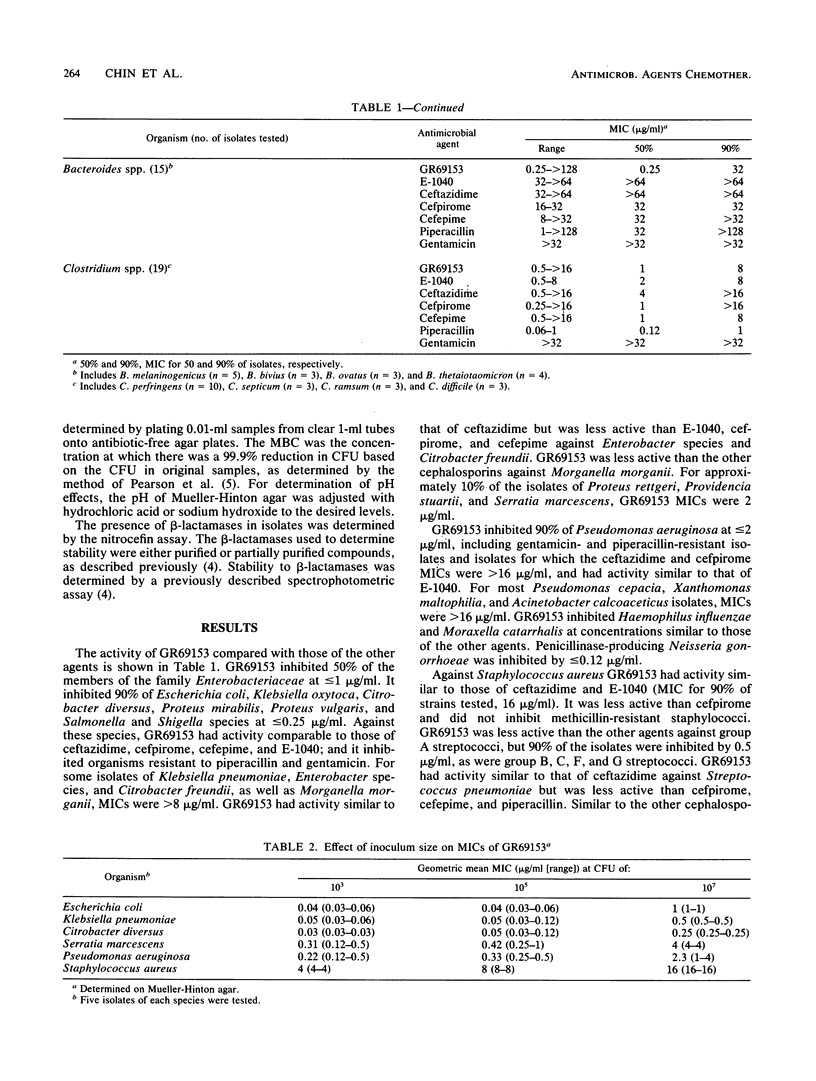
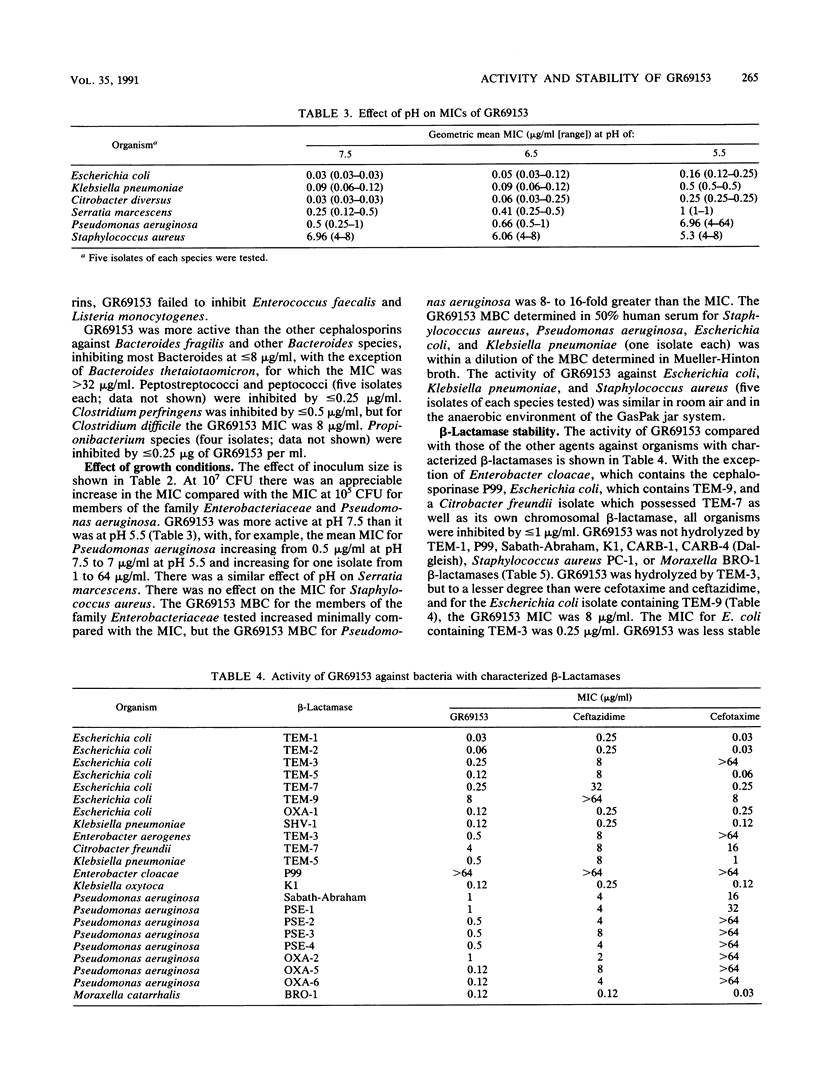

Selected References
These references are in PubMed. This may not be the complete list of references from this article.
- Donowitz G. R., Mandell G. L. Drug therapy. Beta-lactam antibiotics (2). N Engl J Med. 1988 Feb 25;318(8):490–500. doi: 10.1056/NEJM198802253180806. [DOI] [PubMed] [Google Scholar]
- Pearson R. D., Steigbigel R. T., Davis H. T., Chapman S. W. Method of reliable determination of minimal lethal antibiotic concentrations. Antimicrob Agents Chemother. 1980 Nov;18(5):699–708. doi: 10.1128/aac.18.5.699. [DOI] [PMC free article] [PubMed] [Google Scholar]


